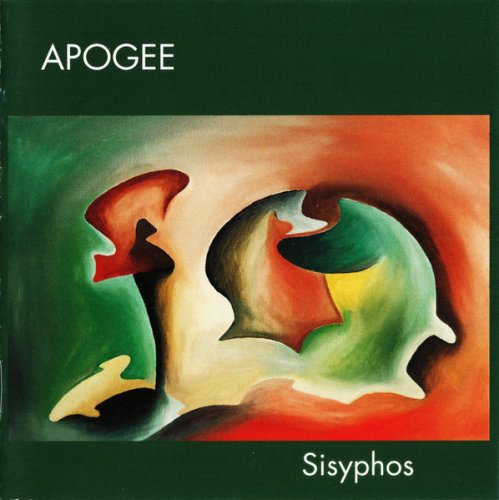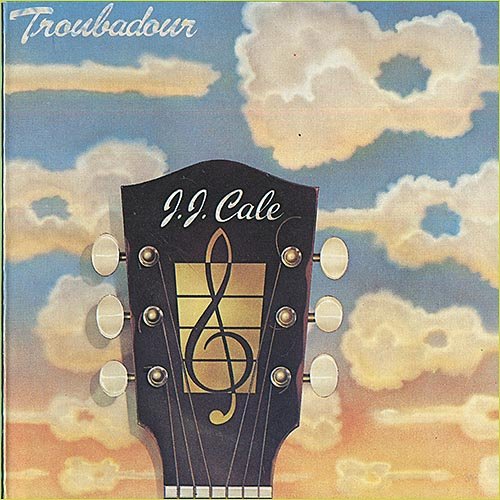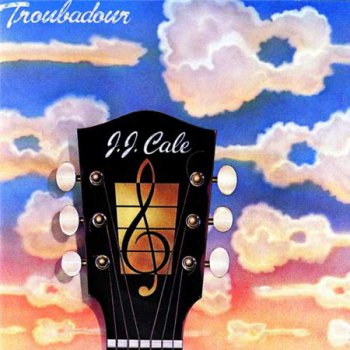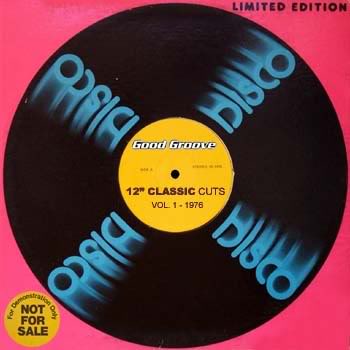Ozric Tentacles – Vitamin Enhanced (1994)
Band: Ozric Tentacles Country: United Kingdom Album: Vitamin Enhanced (Box set 6 CD 006202) Genre: Space Rock, Psychedelic, Instrumental Publisher: Dovetail (DOVE BOX 1) Quality: FLAC (image. cue. log. Full scans) Size: 2.3 Gb Sharing: X-files

Ozric Tentacles – Vitamin Enhanced (1994)
Band: Ozric Tentacles Country: United Kingdom Album: Vitamin Enhanced (Box set 6 CD 006202) Genre: Space Rock, Psychedelic, Instrumental Publisher: Dovetail (DOVE BOX 1) Quality: FLAC (image. cue. log. Full scans) Size: 2.3 Gb Sharing: X-files
15 10, 2025
Wilson Pickett - Funky Midnight Mover - The Atlantic Studio Recordings 1962-1978 (2010) 6CD

Wilson Pickett - Funky Midnight Mover - The Atlantic Studio Recordings 1962-1978 (2010) 6CD
Artist: Wilson Pickett Title Of Album: Funky Midnight Mover Year Of Release: 2010 Label (Catalog#) :Rhino Handmade RHM2 07753 Country:: USA Genre: Funk, Soul, R&B Quality: FLAC (tracks+cue,log) Bitrate: Lossless Time: 07:43:54 Full Size: 3.65Gb(+3%)(covers+book/92page) Info: wiki
14 10, 2025
Apogee - Sisyphos (1998)(2006)

Apogee - Sisyphos (1998)(2006)
Artist: Apogee Title Of Album: Sisyphos Year Of Release: 1998/2006 Label (Catalog#) : Musea / MALS MALS 105 Country:: Germany Genre: Prog Rock, Crossover Prog Quality: WavPac (*image + .cue,log) Bitrate: Lossless Time: 63:52 Full Size: 534Mb(+3%)(covers) Info: progarchives Upload: xfile.cloud
14 10, 2025
Жанры
Lossless Galaxy Release
Русская музыка
--Поп
--Рок
--Панк
--Альтернатива
--Металл
--Рэп, Хип-Хоп, R'n'B
--Джаз и Блюз
--Фолк
--Шансон, Авторская песня
--СССР
Зарубежная музыка
--Pop
--Rock
--Hard Rock
--Progressive & Art-Rock
--Pop-Rock & Soft Rock
--Instrumental Rock
--Heavy, Traditional, Industrial Metal
--Power, Gothic, Sympho Metal
--Thrash, Speed, Groove, Modern Metal
--Death, Melodic Death, Doom, Dark Metal
--Black, Pagan, Folk, Viking Metal
--Alternative
--Punk
--Disco, Eurodance
--Rap, Hip Hop, R'n'B
--Reggae, Ska, Dub
--Jazz, Blues, Soul
--Folk, Country, Ethnic
--Electronic, Ambient, New Wave
--House, Techno, Trance
Другие жанры
--New Age, Relax, Meditative & Flamenco
--Chillout, Lounge, Downtempo, Trip-Hop
--Drum & Bass, Jungle, Breakbeat, IDM
--Classical / Классическая музыка
--Soundtrack
--Музыкальные сказки
Vinyl Rip
HI-Res / DVD-Audio / DTS
--SACD
--DSD
--DVD-Audio
Сборники Lossless-Galaxy
Альбомы 2022
Альбомы 2023
Альбомы 2024
Теги
1st Press 2022 2023 2024 2025 70... AOR Black Metal Blues Blues Rock Bootleg Series Classic Rock Death Metal Discography Exclusive for Lossless-Galaxy Folk Rock Fusion Hard Rock Heavy Metal Hi-Res Japanese Edition Jazz Jazz Rock lossless Melodic Death Metal Melodic Rock Modern Electric Blues Pop Pop Rock Power Metal Prog Rock Progressive Metal Progressive Rock Psych Rock Psychedelic Rock Rock SACD Symphonic Metal Thrash Metal Дискографии от KoGGaN
Архивы
Опрос
В каком формате хотели бы видеть релизы на сайте ?
 Автор: LeddZepp, 13 февраля 2022, Комментариев: 0, Просмотров: 1 316
Автор: LeddZepp, 13 февраля 2022, Комментариев: 0, Просмотров: 1 316J J Cale - Troubadour (1976)

Year: September 1976 (CD 1984)
Label: Mercury Records (West Germany), 810 001-2
Style: Rock, Pop
Country: Oklahoma City, U.S. (December 5, 1938 - July 26, 2013)
Time: 36:26
Format: Flac Tracks 16/44,1 kHz
Size: 194 Mb
Несмотря на то, что песни этого музыканта исполняли такие звезды как Эрик Клэптон, "Lynyrd Skynyrd", "Nazareth", "Deep Purple", Джонни Кэш, "Santana", "Band", "Captain Beefheart", "Allman Brothers Band", Брайан Ферри, имя его плохо известно широкой публике. Скромняга-гитарист, Джей Джей никогда не стремился к славе и всегда уступал ее другим. Джон Уэлдон Кейл родился 5 декабря 1938 года в городе Талса (штат Оклахома). В 50-х он уже начал выступать в клубах и барах, а в 17 лет основал свою банду "Johnny Cale and The Valentines". В 1964-м Кэйл уехал в Лос-Анджелес, где работал звукоинженером и продолжал клубные выступления.
Именно тогда Джон Уэлдон превратился в Джей Джея. Также в то время он принял участие в создании психоделического альбома "Take A Trip Down Sunset Strip" группы "Leather-Coated Minds". Именно во время тех сессий и была написана его первая знаменитая вещица, "After Midnight". Эта песня стала популярной в 1970 году, когда ее исполнил Эрик Клэптон.
Когда "After midnight" оказалась в горячей двадцатке, знакомый продюсер Кейла, Оди Эшворт, настоял на том, чтобы Джей Джей записал свой альбом.
Вышедший в 1972-м "Naturally" содержал немало прекрасных песен, таких как "After Midnight", "Call Me The Breeze", "Magnolia", "Crazy Mama". Последняя из них была издана синглом и добралась до 22-й строчки в чартах (наивысшее достижение Кейла за всю его карьеру). "Naturally" раз и навсегда определил стиль Кейла – тщательно выверенный ритм-эндблюз с "утопленным" вокалом, закованный в 3-х – 4-минутные рамки. Выпустив еще пару альбомов, Джей Джей и Оди переехали в Нэшвилл, где обзавелись собственной студией "Crazy Mama".
Кейл успевал делать не только свои пластинки, но и активно сотрудничал с другими музыкантами. Его гитара нашла себе место на альбомах Эдди Митчелла, Нила Янга и Арта Гарфанкела. В 1976-м вышел диск "Troubadour", содержавший знаменитый рок-гимн "Cocaine".
Эта песня получила большую популярность благодаря ее перепевкам Эриком Клэптоном и "Nazareth".
Слава досталась другим артистам, но Джей Джея вполне удовлетворила денежная компенсация.
Аналогичная история повторилась и с пятым альбомом Кейла.
Потенциальный хит "The Sensitive Kind" в авторском исполнении был проигнорирован радиоэфиром, зато в интерпретации "Santana" эта песня сразу же попала в плэй-листы. Но Кэйла слава по прежнему не волновала. В 1980-м он снова уехал в Калифорнию и отгородился от мира, поселившись в трэйлере. На следующий год Джей Джей расстался со своим первым лейблом "Shelter" и начал выпускать пластинки под крышей "Phonogram".
Сделав для этой фирмы три альбома, Кейл отошел от дел шоу-бизнеса и жил в свое удовольствие. К своему основному занятию музыкант вернулся в 1990 году и за последующие семь лет записал еще пять студийных работ. Затем выпуск дисков опять прекратился и только в 2001-м появился концертник "Live". Этим альбомом Кейл почтил память своего друга и соратника Оди Эшворта.
Новый же студийник Джей Джея увидел свет в 2004 году.
(rockfaces.narod.ru/j/jjcale.htm)
01. Hey Baby (03:13)
02. Travelin' Light (02:51)
03. You Got Something (04:00)
04. Ride Me High (03:35)
05. Hold On (01:59)
06. Cocaine (02:49)
07. I'm A Gypsy Man (02:43)
08. The Woman That Got Away (02:53)
09. Super Blue (02:42)
10. Let Me Do It To You (02:59)
11. Cherry (03:22)
12. You Got Me On So Bad (03:17)



При желании можно посмотреть все мои публикации на сайте. Приятного прослушивания. Жмём и смотрим (Click to see all of my posts)!
Внимание! У Вас нет прав для просмотра скрытого текста.
Изменил: LeddZepp по причине: Обновил ссылки и описание.
Похожие новости:
Комментарии отсутствуют
Добавить комментарий!
Информация
Посетители, находящиеся в группе Гости, не могут оставлять комментарии к данной публикации.

![Peter Bursch Und Die Broselmaschine - Broselmaschine 2 [Reissue 2005] (1976)](/uploads/posts/2020-01/thumbs/1579709599_peter-bursch-und-die-broselmaschine-broselmaschine-2-1976.jpg)


![Dire Straits - Brothers In Arms [Vinyl Rip] (1985)](/uploads/posts/2022-07/1656691009_direstraits85brothersinarms_500_lp.jpg)